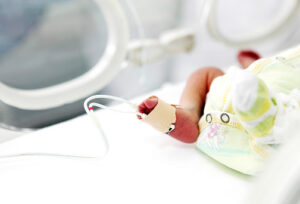Blood donor characteristics may affect transfusion outcomes, but data are conflicting. In order to investigate the association of donor sex and age in very-low-birth weight (VLBW) infants (<1500g) requiring transfusions with the risk of severe outcomes (including death, bronchopulmonary dysplasia, necrotizing enterocolitis, or retinopathy of prematurity), researchers in Atlanta, Georgia evaluated VLBW infants requiring transfusions in the Transfusion-Transmission Cytomegalovirus Study. Of the 598 VLBW infants enrolled in the study, 417 were excluded because they either did not require transfusions or received transfusions from both male and female donors. Overall, 181 VLBW infants (mean birth weight, 919 g; mean gestational age, 27.0 weeks) received 499 RBC transfusions from January 2010 to February 2014; 31% (56/181) received RBCs exclusively from female donors while the remainder received RBCs exclusively from male donors. Severe outcomes were observed in 38% (68/181) of the infants. Only 21% (12/56) of infants who received RBCs from only female donors experienced severe outcomes versus 45% (56/125) of infants who received RBCs from male only donors. Furthermore, significant associations were seen with donor age and the number of transfusions—the protective association from female donors actually increased with donor age but decreased with the number of transfusions (P<0.005 for both interactions). Larger studies are needed to confirm that RBCs from older female donors are associated with protection from severe clinical outcomes in VLBW infants.
Reference:

